Ageing and sexing details:
|
SPRING: ASY-U (after-second-year, sex unknown) |
The two birds photographed are both recaptures from previous years, and therefore known to be ASY by virtue of being banded in late winter / early spring of 2003 and 2007, respectively.
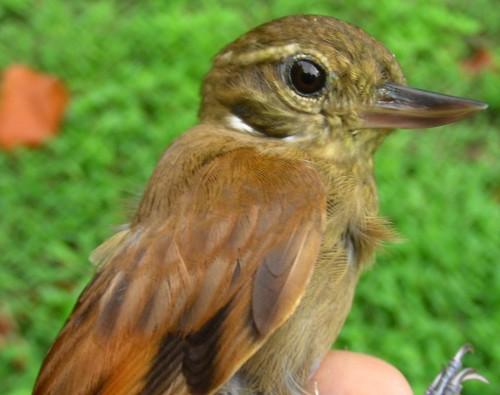
Photo by Marcel Gahbauer, Las Caletas (CR),
April 2008
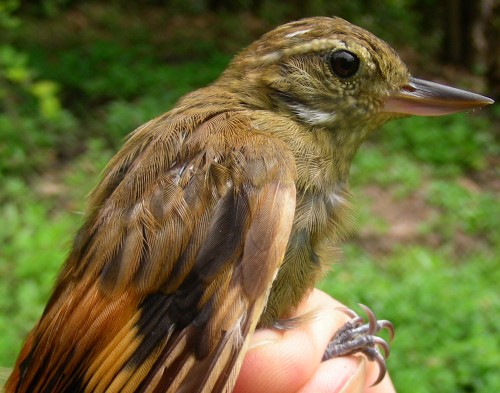
Photo by Marcel Gahbauer, Las Caletas (CR), April 2008
Despite these two birds being recaptured just two days apart in April 2008, the first shows a uniform wing, while the second is clearly in active moult, with the outer three primaries and inner three secondaries yet to be replaced. Both birds are known to be ASY based on banding records, but the second could be as young as third-year, while the other is at least in its seventh year, so it is possible there is an age-related difference in moult strategies. Alternatively, since Plain Xenops are sexually monomorphic, it could be that one of these birds is a male and the other a female, and that there is a difference in timing of moult between the sexes.
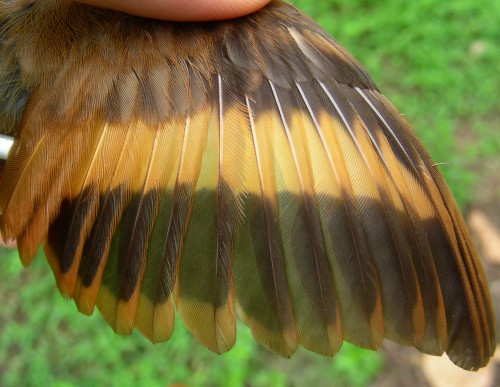
Photo by Marcel Gahbauer, Las Caletas (CR),
April 2008
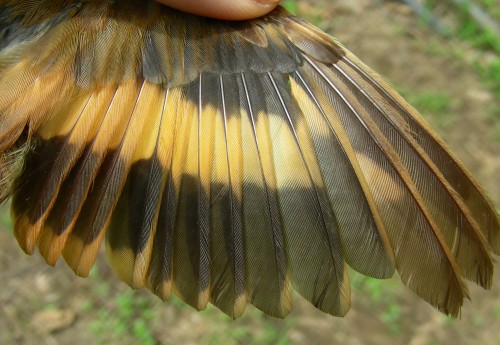
Photo by Marcel Gahbauer, Las Caletas (CR),
April 2008
The first photo below shows broad and rounded rectrices with a distinct orange/black pattern that are presumably typical of ASY Plain Xenops. The second photo is of the individual actively moulting its flight feathers, showing most rectrices missing and a couple of damaged retained feathers, indicataing that the tail is replaced at the same time as the primaries and secondaries.
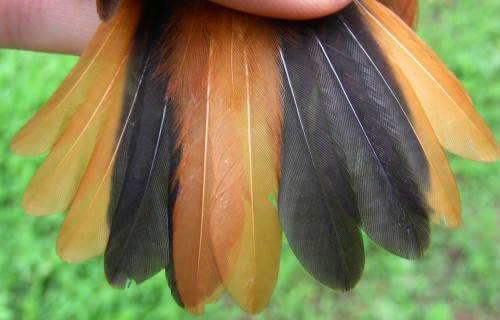
Photo by Marcel Gahbauer, Las Caletas (CR),
April 2008

Photo by Marcel Gahbauer, Las Caletas (CR),
April 2008
RETURN TO AGE/SEX
OVERVIEW